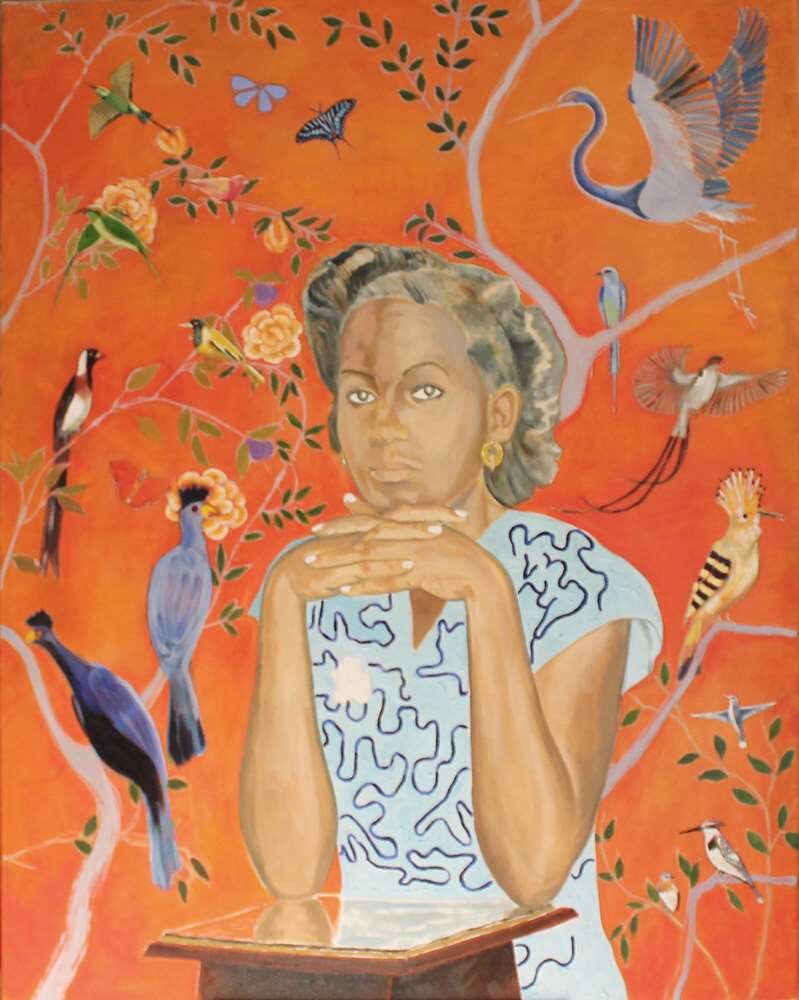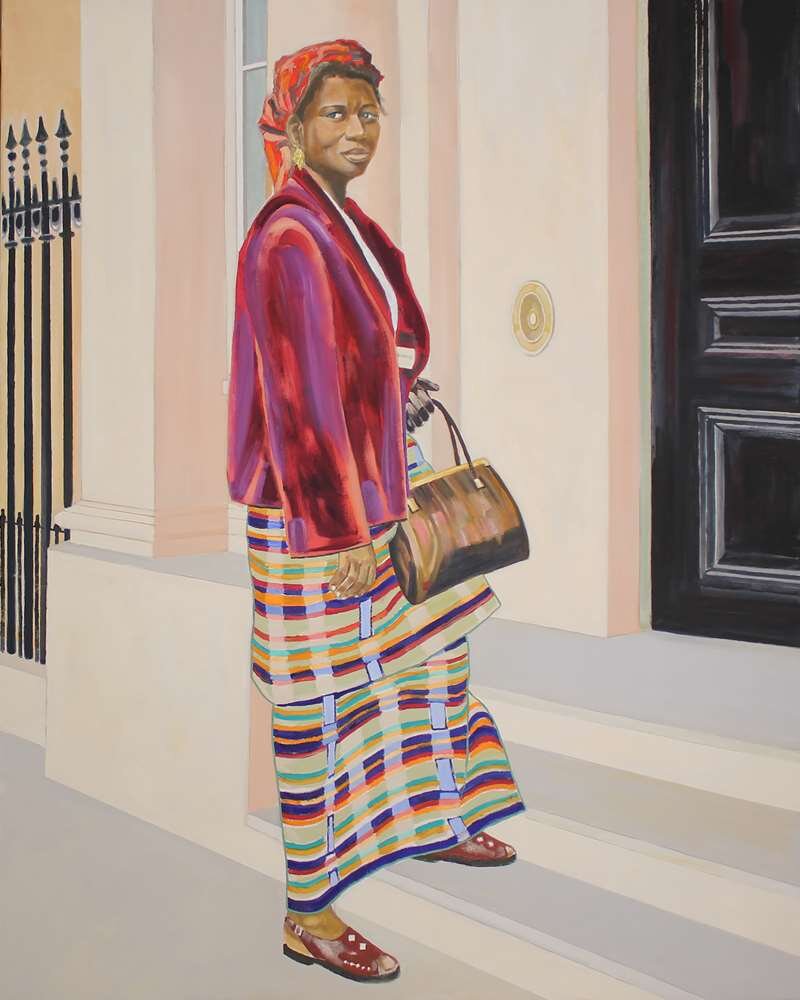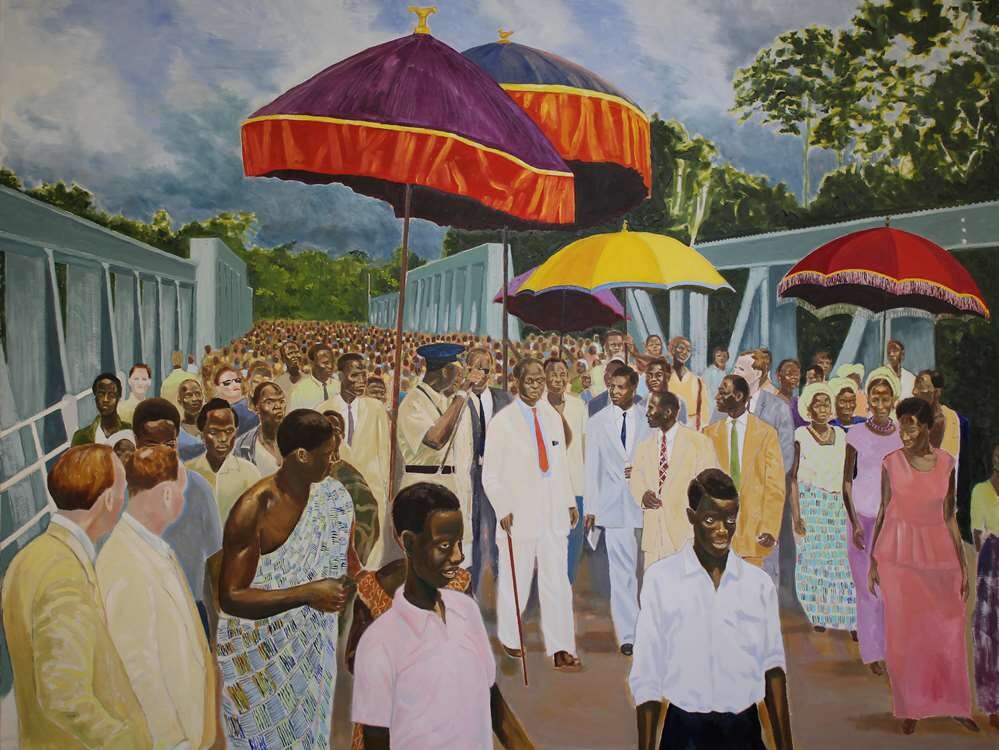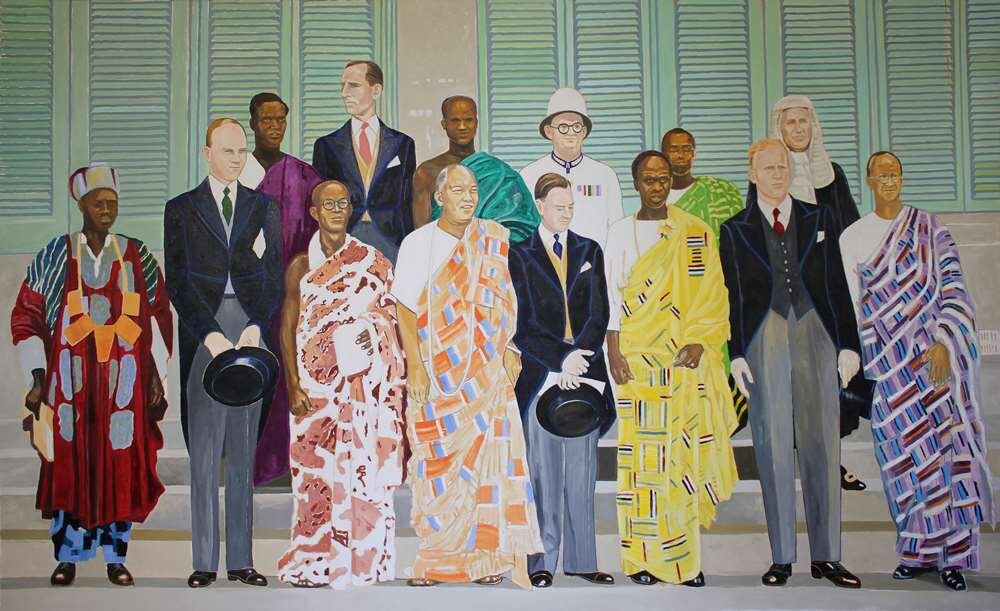The artist’s show at Gallery 1957 explores his family’s close ties to Independence-era Ghana
Arthur Timothy arrived in this world the year Ghana claimed its independence - a moment at once personal and political. Speaking to the UK-based artist and architect as he opened his show of new works at Gallery 1957, Accra – his first in the city of his birth – we found him back straddling the two.
Inspired by old black and white photographs discovered in the artist’s late father’s trunk, the exhibition, titled Grandma’s Hands, offers intimate scenes of family life interspersed with glimpses into political milestones across post-Independence West Africa. His largescale oil paintings gleam in sunny, soft hues and bolts of vibrant patterns. We see figures such as Ghana’s first president, Kwame Nkrumah posing with his first cabinet, as well as portraits of mothers, fathers, friends, siblings and unknown figures lost to the sands of time.
“Hands are so important in all these paintings - comforting, consoling, caressing, writing”
It is perhaps the more familiar faces that initially captivate, among them Timothy’s aunt Mabel Dove Danquah, who he describes as, “a trailblazing feminist who challenged the restrictions usually applied to women.” Captured here on the steps of the Ghanaian Embassy in London, Timothy describes how Mabel was “inspired by suffragists” to become the first female parliamentarian in Ghana as well as the first female editor and an African literary feminist.
Writing ran in the family with Timothy’s father, Bankole Timothy, himself an editor at Ghana’s Daily Graphic paper. We glimpse him in The Journalist (2021), scribbling furiously at his desk, cigarette in mouth. Known as the ‘Big Man’ at home, Bankole was more widely recognised as the writer who would document Nkrumah’s political feats in a defining biography. The two men had been close friends and confidants until Bankole’s increasing criticism of Nkrumah’s evolving politics led to the family being deported to Sierra Leone, when Timothy was just nine years old.
“His word was law,” Timothy recalls of his father. “He was fond of saying ‘He who pays the piper calls the tune’.” The saying, perhaps accidentally, references another dominant theme weaving through family life: the power of music. A fact reflected not only in the exhibition’s title, which is taken from a Bill Wither’s track, but also the gallery’s accompanying soundtrack featuring songs from the artist’s son, the musician Duval Timothy, and another aunt, Evelyn Dove. The portrait of this glamorous rule-breaker depicts her in a regal green cheongsam against a deep purple background. Timothy remembers her as “a grand, beautiful and brilliant lady”. A classically trained singer during the 1920s and 30s, she replaced Josephine Baker at the Casino de Paris and continued to defy convention up until the end - marrying for the third time at 56, to a man almost 30 years her junior.
“Hands are so important in all of these paintings - comforting, consoling, caressing, writing…” Timothy reflects. In discussing his grandmother’s own palms, he notes, “Those hands nurtured, cajoled, embraced, admonished and comforted - not just my family but many friends and other families within my grandmother’s wide circle of acquaintances.”
Timothy and Dove’s sphere encapsulated both progressive women and powerful men. In works such as Rubicon (2021), we see the frenzied opening of a new bridge; political posturing in all its finest. However, it is a soft but no less potent power that seeps from the exhibition’s eponymous work. Hidden behind rock star shades, Timothy’s grandmother appears both comforting and unswerving. Despite its care and intimacy, the work reminds us of the personal in the political; we are left wondering if, without the strong hands of matriarchs, the great feats of the civil figures portrayed here, could have ever been achieved.
Arthur Timothy - Grandma’s Hands is co-curated by Ekow Eshun and on view at Gallery 1957, Gallery II space, Accra until 1 October 2021







